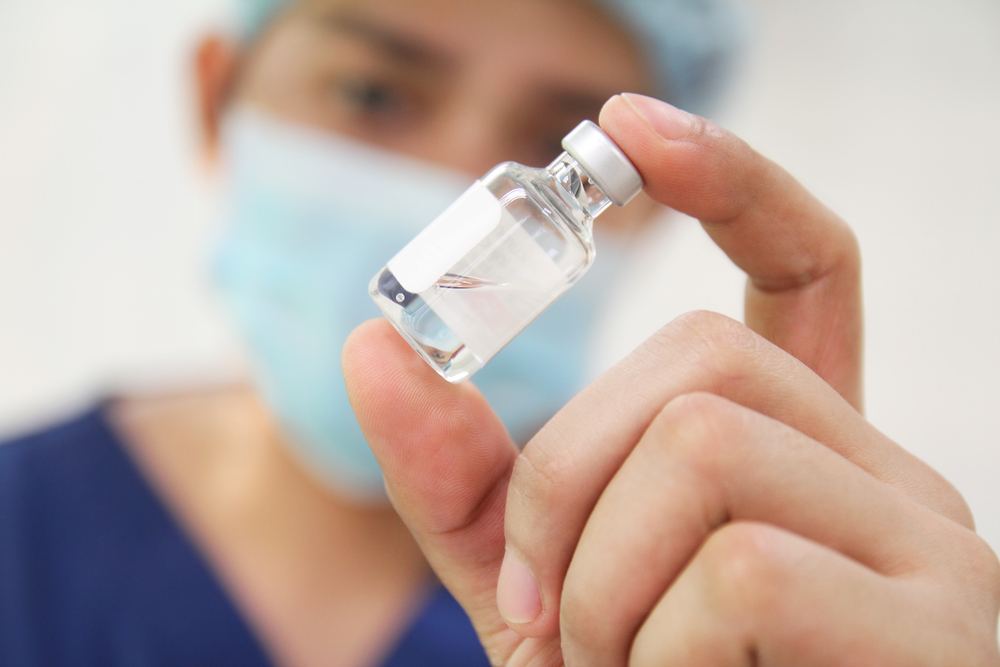PRX-102 Improves Kidney Function in Fabry Patients, Preliminary Phase 3 Data Show
Written by |

Treatment with PRX-102 (pegunigalsidase alfa) can safely and effectively improve kidney function in Fabry disease patients, according to preliminary data from a Phase 3 clinical trial.
One year of treatment with PRX-102 significantly improved the clinical status of all patients with progressing disease and 66.7% of those with fast-progressing disease.
PRX-102, developed by Protalix BioTherapeutics with Chiesi Farmaceutici, is an investigational enzyme replacement therapy (ERT) that compensates for the lack of the alpha-galactosidase A (αGAL-A) enzyme in Fabry patients.
The absence of αGAL-A leads to the damaging accumulation of two fat molecules — Gb3 and lysoGb3 — in tissues such as the heart, kidneys, nervous system, eyes, and skin.
The safety and impact of PRX-102 is being evaluated in the open-label, switch-over Phase 3 BRIDGE trial (NCT03018730) in Fabry patients previously treated with the ERT Replagal (agalsidase alfa, developed by Shire) for at least two years.
After an initial three-month period of observation while on a stable dose of Replagal, participants switched to 1 mg/kg of PRX-102, administered intravenously (directly into the vein) every two weeks for a year.
These preliminary results concern the first 16 of the 22 enrolled patients (nine men and seven women, ages 27 to 60 years) who have completed 12 months of PRX-102 treatment.
The treatment significantly improved patients’ kidney function by reverting the decline in the glomerular filtration rate (eGFR) — a measure of how well the kidneys are cleaning the blood — over one year.
Changes in eGFR values improved from -5.10 mL/min/1.73m2 per year while taking Replagal up to -0.23 mL/min/1.73m2 per year on PRX-102.
This positive effect was reported in 100% of the progressing patients — who had an eGFR change slope between -5 and -3 mL/min/1.73 m2 per year at study start — and in 66.7% of the fast progressing group — eGFR slope equal to or higher than -5 mL/min/1.73 m2 per year.
Most of the patients who completed the study decided to continue treatment with PRX-102 by entering a long-term extension study (NCT03566017).
PRX-102 was well tolerated and generally safe; all adverse events reported during the study were temporary and did not cause additional health problems.
“We previously announced positive preliminary results from 16 patients after six months in the BRIDGE study in September 2018, and these new results, after 12 months of treatment, further suggest the strong potential benefit of pegunigalsidase alfa on renal function for Fabry patients,” Raul Chertkoff, MD, vice president of medical affairs at Protalix, said in a press release.
BRIDGE is one of three Phase 3 trials exploring the safety and efficacy of PRX-102. The ongoing Phase 3 BALANCE (NCT02795676) and BRIGHT (NCT03180840) studies are also fully enrolled.
Protalix and Chiesi Farmaceutici announced in June that they were preparing to submit a biologics license application for PRX-102 to the U.S. Food and Drug Administration.
The application, which is expected to be submitted in the first quarter of 2020, will be based on available data from PRX-102’s Phase 1/2 trials and the BRIDGE study.





